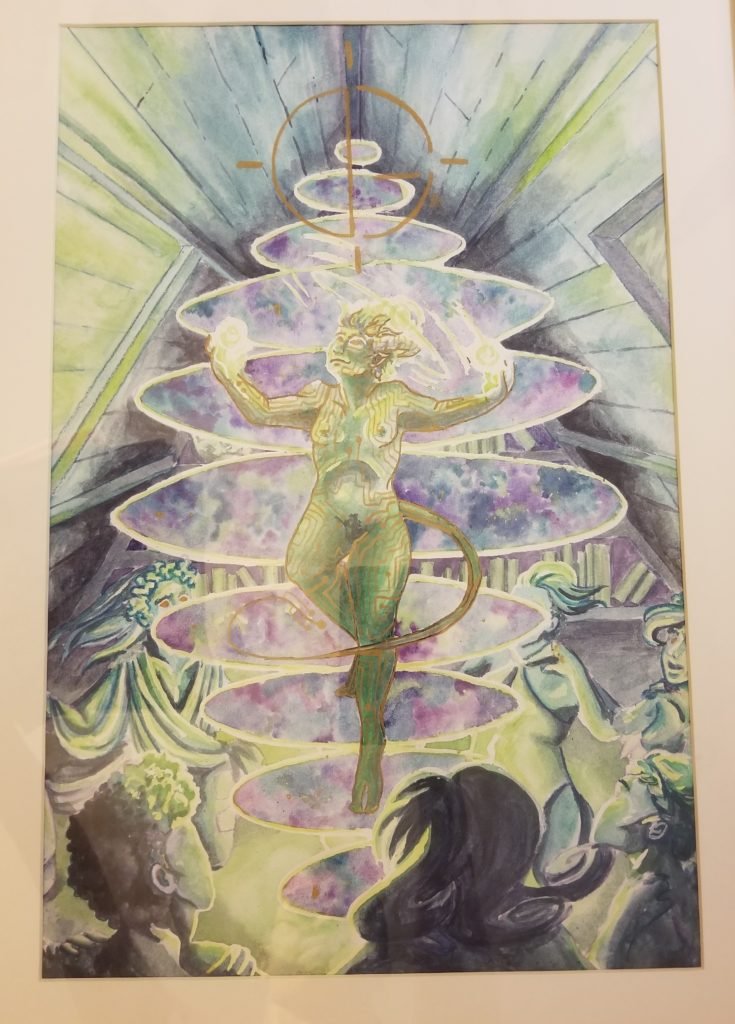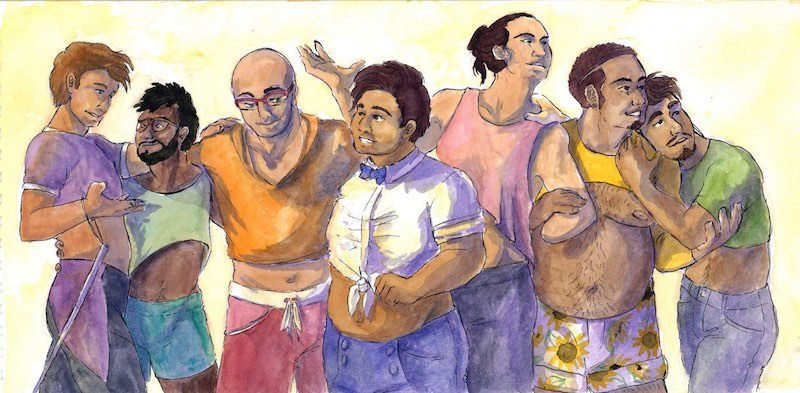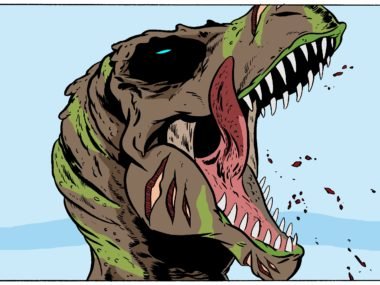A. GrandMark publishes sex education and erotic comics that are queer-centered, inclusive, and accessible narratives by trans characters. They also create watercolor and digital paintings that celebrate queer experiences and center people outside of a cis-het lens.
STL SPEX (Joceline): What are your artistic influences?
A lot of the works I make are a love letter to the queer kid who lives in my past and in my heart, who didn’t know there were other people feeling the same sense of yearning I did. My erotic works are often about dreaming into the world the kind of joy and intimacy I want to see portrayed and lived, often with some humor and silliness thrown into the mix. My work is very self-indulgent, but it’s with the intent and hope that it gives others permission to be self-indulgent as well. My work is for people who want to have things be beautiful and loud and tender but also not lose a kind of play in them.
STL SPEX: Who do you create for?
I think my artwork is influenced a lot by fandom artists as well as webcomic creators and illustrators I read when I was a teenager/in my early twenties. Khaos Komix by Tab Kimpton, Lost Honey Creator F. Lee, Coleen Coover’s work on Small Favors, Rosalarian’s work, Kevin Wada’s watercolors, Mike Alred’s art, as well as Mike Mignola all come to mind as artists who I remember poring over in that time period. Shae Beagle’s Moonstruck, Felix D’Leon’s beautiful pinups, C. Spike Trotman’s character designs, Olivia Stephen’s Alone and erotic works, G.C. Houle’s comics, Jess Fink’s Chester 5000XY, and Natalie Riess’ Snarl Bear all also contain aesthetics I love and aspire towards. I’m a huge sucker for distinctive character design, textured watercolors, delicate inkwork, striking colorwork, or when characters feel really fleshy for lack of better phrasing. Whether what I love as a consumer of works shows up in the works I create, I can’t really say, but I hope it does.

STL SPEX: What is the biggest obstacle that comes with sex-ed comics?
I think the biggest challenge in sex-ed comics is making sure I’m being clear and deliberate in how I explain things and what I explain. Sex and sexuality are messy, both in the practical logistics of how things get done, but also in the mental, emotional space of how we think, feel, and explore ourselves and others. Capturing all that on the page, and making sure that I am welcoming the people who are just unpacking all the little things they were told to tuck away and be ashamed of liking as well as the folks who are living their most open and adventurous lives and have years of experience experimenting is challenging.
STL SPEX: Your art depicts very intimate scenarios; is there a topic you shy away from?
There are some topics that I feel like I am unqualified to educate on or explore creatively, yes. For example, as a white person, I would rather refer people to the works of sex educators and creators of color rather than act like I know a damn thing about the ways racism impacts a person’s erotic and sexual identities. Likewise, as a nonbinary person, I don’t feel it’s appropriate for me to tell stories centered on a binary trans person’s experiences because that’s not a lens I am seeing through. Essentially if it is an experience I myself am incapable of truly knowing, then I do not feel it’s my place to create works that attempt to know that lens. There are other subjects, like rediscovering your sexual self after assault or trauma, that I wish to explore eventually in my work, but know will require a very deliberate, nuanced approach that understands how varied experiences and the path to healing is.
There are some subjects, like how to use a dental dam, that I feel comfortable covering in a short form comic. But many subjects on sexuality, require a deeper dive to breathe and unpack. The human brain does some bizarre loop de loops, sometimes the things we are drawn to sexually and erotically are things that can be triggering, dangerous, or carry oppressive weight in our culture. When it comes to sex ed comics, those subjects will take me much more time, deliberation, and outside review to balance my perspective.







